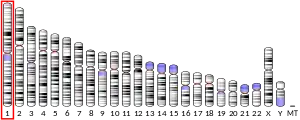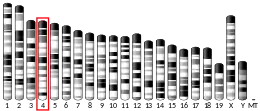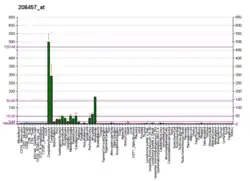| GABRD | |||||||||||||||||||||||||||||||||||||||||||||||||||
|---|---|---|---|---|---|---|---|---|---|---|---|---|---|---|---|---|---|---|---|---|---|---|---|---|---|---|---|---|---|---|---|---|---|---|---|---|---|---|---|---|---|---|---|---|---|---|---|---|---|---|---|
| Identifiers | |||||||||||||||||||||||||||||||||||||||||||||||||||
| Aliases | GABRD, EIG10, EJM7, GEFSP5, gamma-aminobutyric acid type A receptor delta subunit, gamma-aminobutyric acid type A receptor subunit delta | ||||||||||||||||||||||||||||||||||||||||||||||||||
| External IDs | OMIM: 137163 MGI: 95622 HomoloGene: 55489 GeneCards: GABRD | ||||||||||||||||||||||||||||||||||||||||||||||||||
| |||||||||||||||||||||||||||||||||||||||||||||||||||
| |||||||||||||||||||||||||||||||||||||||||||||||||||
| |||||||||||||||||||||||||||||||||||||||||||||||||||
| |||||||||||||||||||||||||||||||||||||||||||||||||||
| |||||||||||||||||||||||||||||||||||||||||||||||||||
| Wikidata | |||||||||||||||||||||||||||||||||||||||||||||||||||
| |||||||||||||||||||||||||||||||||||||||||||||||||||
Gamma-aminobutyric acid receptor subunit delta is a protein that in humans is encoded by the GABRD gene.[5][6][7] In the mammalian brain, the delta (δ) subunit forms specific GABAA receptor subtypes by co-assembly leading to δ subunit containing GABAA receptors (δ-GABAA receptors).[8]
Structure and function
The delta (δ) subunit, one of the subunits of the hetero-pentameric δ-GABAA receptors, is a determinant subunit for the specific cellular localization of δ-GABAA receptors,[8][9] which are modulated by the GABA. GABA is the major inhibitory neurotransmitter in the mammalian brain where it acts on the repertoire of GABAA receptors, the ligand-gated chloride channels. It is assembled from a diverse subunit pool, including assemblies from a family of 19 subunits (α1-α6, β1-β3, γ1-γ3, δ, ∈, θ, π and ρ1-ρ3).[10][9] The GABRD gene encodes the delta (δ) subunit.[7] Specifically, the δ-subunit is usually expressed in GABAA receptors associated with extrasynaptic activity, mediating tonic inhibition, which is slower compared to classical inhibition (phasic or synaptic inhibition).[9] The most common GABAA receptors have the gamma subunit, which allows the receptor to bind benzodiazepines. For this reason, receptors containing δ-subunits (δ-GABAA receptor) are sometimes referred to as “benzodiazepine-insensitive” GABAA receptors. However, they do show an exquisitely high sensitivity to ethanol compared to the benzodiazepine-sensitive receptors, which do not respond to ethanol however these results are not fully confirmed in the literature.[8] The δ-subunit containing receptors are also known to be involved in the ventral tegmental area (VTA) pathway in the brain's hippocampus, which means that they may have implications in learning, memory, and reward.[11]
GABRD is among the most important neurotransmitters in our brain and can be a harbinger of some diseases thanks to some gene expressions (for example, genetic and epigenetic factors). For example, research shows that it may play a role in neurodegenerative diseases and even some cancers, and sometimes this gene expression can be encountered even in mental states.[12]
GABRD effect has also been observed in some types of cancer. For example, GABRD effect has been observed in colorectal cancer. According to research conducted by scientists, it has been observed that colorectal cancers metastasize.[13] In some neurological diseases, some mutations occur depending on GABRD gene expression, and as a result of these mutations, some diseases occur, for example, epilepsy. Epilepsy is called the sudden discharge process that occurs in the brain, and as a result, sudden contractions occur in the body. but the role of GABRD in epilepsy is less. It has also been observed that it has an effect on autism spectrum disorder as a result of the variation of the GABRD protein.[14] The GABRD gene encodes the δ subunit of the GABA A receptor, which is highly expressed in the brain and mediates tonic inhibition-related signaling. It has also been proven that excessive release of neurotransmitters plays a role in triggering some types of cancer and uncontrolled cell proliferation. In recent studies, GABRD gene expression is at very high levels in colon adenocarcinoma. In addition, scientists have proven in their research that Gabrd expression is excessive in the relevant tissues.[15]
GABA levels, known as the neurotransmitter, one of the most important signals of the mammalian brain, have recently been involved in mood disorders. Genetic studies have also shown that some genes are involved in mood disorders. GABARD is one of the strong candidates among these genes. As a result of studies, it has been proven that the 8 subunits encoded by GABRD are linked to major depressive disorders.[16]
Cloning of GABAA receptor
GABAA receptors were initially cloned by the classical method that the peptide sequences obtained from purified (bovine brain) receptors were used to construct synthetic DNA probes to screen brain cDNA libraries.[9][17][18] Eventually, this technique have led to the identification of most of the gene family with its isoforms: α1-α6, β1-β3, γ1-γ3 subunits and one δ subunit.[19]
Cell type-specific expression
The cellular localization of mRNAs of 13 GABAA receptor subunits was analyzed in different brain regions.[20] For example, in the cerebellum, various receptor subtypes are found in cerebellar granule cells and Purkinje cells, whereas in the olfactory bulb, periglomerular cells, tufted cells, and internal granule cells express GABAA receptor subtypes.[21] Specifically, the pattern of cell type-specific δ subunit expression is shown in the table below.
| Subunit composition | Cell type |
|---|---|
| α6bδ | Cerebellar granule cells |
| α1bδ | Hippocampal interneurons, Neocortical interneurons |
| α4β2δ | Thalamic relay neurons, Striatal spiny neurons, Hippocampal dentate granule cells, Neocortical pyramidal cells |
In a technical comparison between quantitative reverse transcriptase PCR and digital PCR, the expression of the rat gabrd gene was examined across three cell types in the somatosensory cortex: neurogliaform cells, fast spiking basket cells and pyramidal cells.[22] Gene expression was detected in all three cell types, but showed marked enrichment in neurogliaform cells versus the other cell types examined.[22] The GABAA receptor delta subunit is profoundly downregulated with chronic intermittent exposure to ethanol, and appears to contribute strongly to pathological alcohol dependence.[23]
δ-subunit GFP tagging
Subunits of GABA A receptors were tagged by Green Fluorescent Protein (GFP) or its variants (EGFP) to study trafficking, localization, oligomerization, and protein interactions of relevant receptor subtypes and the relevant subunits. Typically, the EGFP or GFP tagging has been done in the N-terminus or C-terminus of the mature peptide sequence of relevant subunit. The GFP tagging of δ-subunit was performed in the different domains of the subunit such as the N-terminus, C-terminus as well as intracellular (cytoplasmic) domain.[24][25][26] Nevertheless, despite these and other studies, it is not clear if this subunit requires α and β subunits for the membrane targeting since literature suggests conflicting results. By the use of GFP tagging of this subunit, one group reported that the cell membrane expression of the δ subunit was observed only in the presence of both α and β subunits.[26] However, another group suggested that the δ subunit can target to the cell membrane and the βδ containing receptors exist.[27]
See also
References
- 1 2 3 GRCh38: Ensembl release 89: ENSG00000187730 - Ensembl, May 2017
- 1 2 3 GRCm38: Ensembl release 89: ENSMUSG00000029054 - Ensembl, May 2017
- ↑ "Human PubMed Reference:". National Center for Biotechnology Information, U.S. National Library of Medicine.
- ↑ "Mouse PubMed Reference:". National Center for Biotechnology Information, U.S. National Library of Medicine.
- ↑ Sommer B, Poustka A, Spurr NK, Seeburg PH (October 1990). "The murine GABAA receptor delta-subunit gene: structure and assignment to human chromosome 1". DNA and Cell Biology. 9 (8): 561–568. doi:10.1089/dna.1990.9.561. PMID 2176788.
- ↑ Emberger W, Windpassinger C, Petek E, Kroisel PM, Wagner K (Sep 2000). "Assignment of the human GABAA receptor delta-subunit gene (GABRD) to chromosome band 1p36.3 distal to marker NIB1364 by radiation hybrid mapping". Cytogenetics and Cell Genetics. 89 (3–4): 281–282. doi:10.1159/000015636. PMID 10965146. S2CID 83974022.
- 1 2 "Entrez Gene: GABRD gamma-aminobutyric acid (GABA) A receptor, delta".
- 1 2 3 4 Arslan A (March 2021). "Extrasynaptic δ-subunit containing GABAA receptors". Journal of Integrative Neuroscience. 20 (1): 173–184. doi:10.31083/j.jin.2021.01.284. ISSN 1757-448X. PMID 33834705. S2CID 233193240.
- 1 2 3 4 Goetz T, Arslan A, Wisden W, Wulff P (2007). "GABAA receptors: Structure and function in the basal ganglia". GABA(A) receptors: structure and function in the basal ganglia. Progress in Brain Research. Vol. 160. Elsevier. pp. 21–41. doi:10.1016/s0079-6123(06)60003-4. ISBN 978-0-444-52184-2. PMC 2648504. PMID 17499107.
- ↑ Korpi ER, Gründer G, Lüddens H (June 2002). "Drug interactions at GABA(A) receptors". Progress in Neurobiology. 67 (2): 113–159. doi:10.1016/S0301-0082(02)00013-8. PMID 12126658. S2CID 140204981.
- ↑ Vashchinkina E, Panhelainen A, Aitta-Aho T, Korpi ER (2014-11-25). "GABAA receptor drugs and neuronal plasticity in reward and aversion: focus on the ventral tegmental area". Frontiers in Pharmacology. 5: 256. doi:10.3389/fphar.2014.00256. PMC 4243505. PMID 25505414.
- ↑ Hong, Q., Xu, W., Lin, Z., Liu, J., Chen, W., Zhu, H., ... & Liu, H. (2021). Role of GABRD gene methylation in the nucleus accumbens in heroin-seeking behavior in rats. Frontiers in Pharmacology, 11, 612200.
- ↑ Niu G, Deng L, Zhang X, Hu Z, Han S, Xu K, Hong R, Meng H, Ke C. GABRD promotes progression and predicts poor prognosis in colorectal cancer. Open Med (Wars). 2020 Nov 21;15(1):1172-1183. doi: 10.1515/med-2020-0128. PMID: 33336074; PMCID: PMC7718617.
- ↑ Ahring PK, Liao VWY, Gardella E, Johannesen KM, Krey I, Selmer KK, Stadheim BF, Davis H, Peinhardt C, Koko M, Coorg RK, Syrbe S, Bertsche A, Santiago-Sim T, Diemer T, Fenger CD, Platzer K, Eichler EE, Lerche H, Lemke JR, Chebib M, Møller RS. Gain-of-function variants in GABRD reveal a novel pathway for neurodevelopmental disorders and epilepsy. Brain. 2022 May 24;145(4):1299-1309. doi: 10.1093/brain/awab391. PMID: 34633442; PMCID: PMC9630717.
- ↑ Wu M, Kim KY, Park WC, Ryu HS, Choi SC, Kim MS, Myung JY, Choi HS, Kim EJ, Lee MY. Enhanced expression of GABRD predicts poor prognosis in patients with colon adenocarcinoma. Transl Oncol. 2020 Dec;13(12):100861. doi: 10.1016/j.tranon.2020.100861. Epub 2020 Sep 3. PMID: 32891902; PMCID: PMC7484591.
- ↑ Feng Y, Kapornai K, Kiss E, Tamás Z, Mayer L, Baji I, Daróczi G, Benák I, Kothencné VO, Dombovári E, Kaczvinszk E, Besnyo M, Gádoros J, Székely J, Kovacs M, Vetró A, Kennedy JL, Barr CL. Association of the GABRD gene and childhood-onset mood disorders. Genes Brain Behav. 2010 Aug;9(6):668-72. doi: 10.1111/j.1601-183X.2010.00598.x. Epub 2010 Jun 18. PMID: 20561060; PMCID: PMC2935687.
- ↑ Grenningloh G, Gundelfinger E, Schmitt B, Betz H, Darlison MG, Barnard EA, et al. (November 1987). "Glycine vs GABA receptors". Nature. 330 (6143): 25–26. Bibcode:1987Natur.330...25G. doi:10.1038/330025b0. PMID 2823147. S2CID 4328002.
- ↑ Schofield PR, Darlison MG, Fujita N, Burt DR, Stephenson FA, Rodriguez H, et al. (July 1987). "Sequence and functional expression of the GABA A receptor shows a ligand-gated receptor super-family". Nature. 328 (6127): 221–227. Bibcode:1987Natur.328..221S. doi:10.1038/328221a0. PMID 3037384. S2CID 4242202.
- ↑ Seeburg PH, Wisden W, Verdoorn TA, Pritchett DB, Werner P, Herb A, et al. (1990-01-01). "The GABAA receptor family: molecular and functional diversity". Cold Spring Harbor Symposia on Quantitative Biology. 55: 29–40. doi:10.1101/SQB.1990.055.01.006. PMID 1966765.
- ↑ Wisden W, Laurie DJ, Monyer H, Seeburg PH (March 1992). "The distribution of 13 GABAA receptor subunit mRNAs in the rat brain. I. Telencephalon, diencephalon, mesencephalon". The Journal of Neuroscience. 12 (3): 1040–1062. doi:10.1523/JNEUROSCI.12-03-01040.1992. PMC 6576059. PMID 1312131.
- ↑ Laurie DJ, Seeburg PH, Wisden W (March 1992). "The distribution of 13 GABAA receptor subunit mRNAs in the rat brain. II. Olfactory bulb and cerebellum". The Journal of Neuroscience. 12 (3): 1063–1076. doi:10.1523/JNEUROSCI.12-03-01063.1992. PMC 6576040. PMID 1312132.
- 1 2 Faragó N, Kocsis ÁK, Lovas S, Molnár G, Boldog E, Rózsa M, et al. (June 2013). "Digital PCR to determine the number of transcripts from single neurons after patch-clamp recording". BioTechniques. 54 (6): 327–336. doi:10.2144/000114029. PMID 23750542.
- ↑ Follesa P, Floris G, Asuni GP, Ibba A, Tocco MG, Zicca L, Mercante B, Deriu F, Gorini G (2015). "Chronic Intermittent Ethanol Regulates Hippocampal GABA(A) Receptor Delta Subunit Gene Expression". Frontiers in Cellular Neuroscience. 9: 445. doi:10.3389/fncel.2015.00445. PMC 4637418. PMID 26617492.
- ↑ Arslan A, von Engelhardt J, Wisden W (December 2014). "Cytoplasmic domain of δ subunit is important for the extra-synaptic targeting of GABAA receptor subtypes". Journal of Integrative Neuroscience. 13 (4): 617–631. doi:10.1142/S0219635214500228. PMID 25233879.
- ↑ Christie SB, Li RW, Miralles CP, Yang B, De Blas AL (January 2006). "Clustered and non-clustered GABAA receptors in cultured hippocampal neurons". Molecular and Cellular Neurosciences. 31 (1): 1–14. doi:10.1016/j.mcn.2005.08.014. PMID 16181787. S2CID 40720887.
- 1 2 Oflaz FE, Son ÇD, Arslan A (December 2019). "Oligomerization and cell surface expression of recombinant GABAA receptors tagged in the δ subunit". Journal of Integrative Neuroscience. 18 (4): 341–350. doi:10.31083/j.jin.2019.04.1207. hdl:11511/41973. PMID 31912692. S2CID 210086414.
- ↑ Lee HJ, Absalom NL, Hanrahan JR, van Nieuwenhuijzen P, Ahring PK, Chebib M (August 2016). "A pharmacological characterization of GABA, THIP and DS2 at binary α4β3 and β3δ receptors: GABA activates β3δ receptors via the β3(+)δ(-) interface". Brain Research. 1644: 222–230. doi:10.1016/j.brainres.2016.05.019. PMID 27181518. S2CID 206337032.
Further reading
- Lim J, Hao T, Shaw C, Patel AJ, Szabó G, Rual JF, et al. (May 2006). "A protein-protein interaction network for human inherited ataxias and disorders of Purkinje cell degeneration". Cell. 125 (4): 801–814. doi:10.1016/j.cell.2006.03.032. PMID 16713569. S2CID 13709685.
- Lenzen KP, Heils A, Lorenz S, Hempelmann A, Sander T (June 2005). "Association analysis of the Arg220His variation of the human gene encoding the GABA delta subunit with idiopathic generalized epilepsy". Epilepsy Research. 65 (1–2): 53–57. doi:10.1016/j.eplepsyres.2005.04.005. PMID 16023832. S2CID 20661316.
- Windpassinger C, Kroisel PM, Wagner K, Petek E (June 2002). "The human gamma-aminobutyric acid A receptor delta (GABRD) gene: molecular characterisation and tissue-specific expression". Gene. 292 (1–2): 25–31. doi:10.1016/S0378-1119(02)00649-2. PMID 12119096.
External links
- GABRD+protein,+human at the U.S. National Library of Medicine Medical Subject Headings (MeSH)
This article incorporates text from the United States National Library of Medicine, which is in the public domain.




